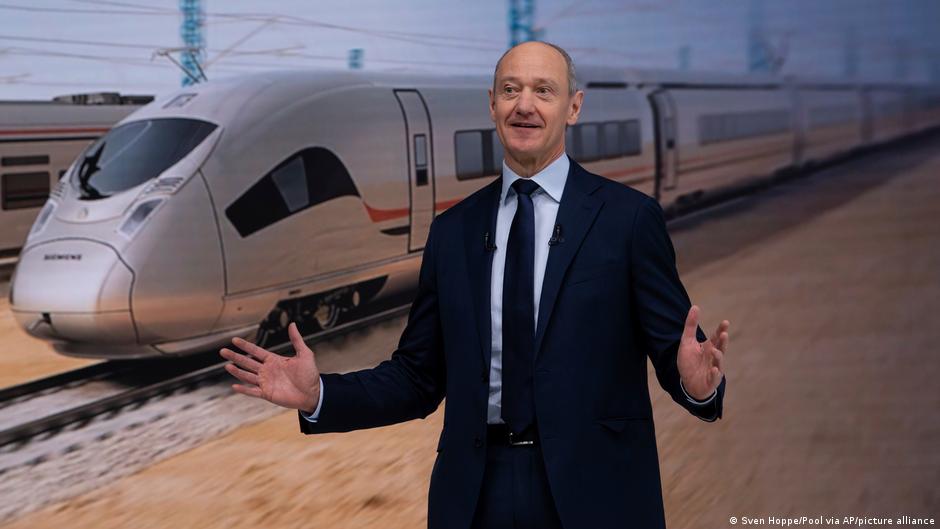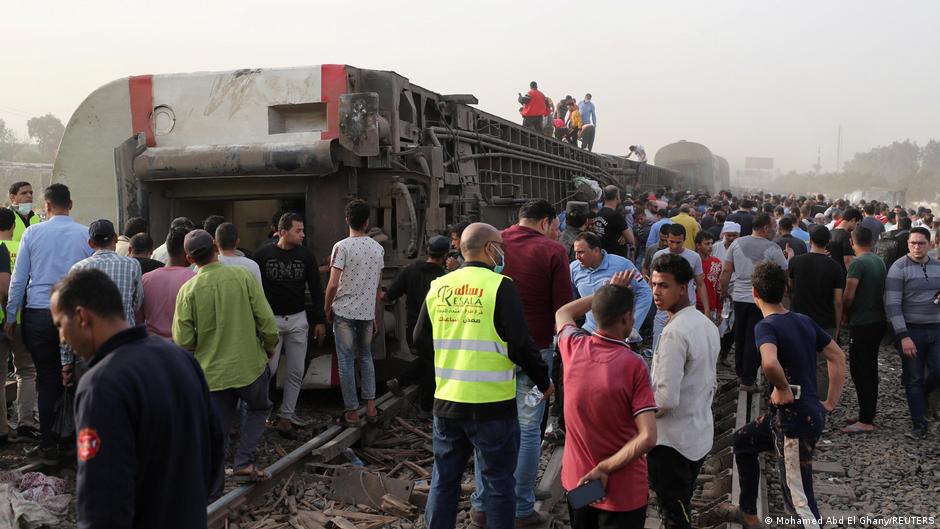High speed up the Nile valley

It is an order of superlatives, the largest Siemens has ever landed in its 175-year history. Siemens is to build a 2,000-kilometre railway network for high-speed trains in Egypt worth 8.1 billion euros. The project will finally modernise the most populous Arab country’s railway system, one of the world's oldest. However, the entire project is fraught with uncertainty. Probably the most important question is will the German taxpayer end up footing the bill if, as seems likely, the over-indebted country turns out to be unable to fully finance the mega-project? It is, however, by no means the only one.
According to Siemens Mobility, the company plans to supply Egypt with 41 high-speed trains, 94 regional trains and 41 freight locomotives, in addition to constructing the track. In future, trains will run through the Nile Valley and the desert on three large sections of track at speeds of up to 230 kilometres per hour.
The deal was finalised last weekend. at the signing ceremony in Cairo with Siemens CEO Roland Busch, Egypt's President Abdul Fattah al-Sisi described the new rail network as a "valuable addition to Egypt's transport system" and "the beginning of a new era for the railway system in Egypt, Africa and the Middle East."
“With our latest technology for rolling stock, signalling and maintenance, Egypt will have the sixth largest and most modern high-speed rail network in the world," Siemens CEO Busch said as the contract was signed.
A "new Suez Canal on rails"
The first section is to be built from Ain Sukhna on the Red Sea, an hour's drive from Cairo, via the new capital commissioned by Sisi and then on through Cairo and from there to the Mediterranean coast, to the town of Marsa Matrouh in the west. Touted by Siemens as the "new Suez Canal on rails", this section of the line had already been agreed on last year.
Only then will it be the turn of the north-south line in the Nile Valley, where the majority of Egyptians live. It is to run from Alexandria via Aswan to the temple of Abu Simbel on the Aswan Dam reservoir. At the southern end, another route is to be built – from the city of Safaga, south of the Red Sea, into the Nile Valley.
It is an order of superlatives, the largest Siemens has ever landed in its 175-year history. Siemens is to build a 2,000-kilometre railway network for high-speed trains in Egypt worth 8.1 billion euros. The project will finally modernise the most populous Arab country’s railway system, one of the world's oldest. However, the entire project is fraught with uncertainty. Probably the most important question is will the German taxpayer end up footing the bill if, as seems likely, the over-indebted country turns out to be unable to fully finance the mega-project? It is, however, by no means the only one.
According to Siemens Mobility, the company plans to supply Egypt with 41 high-speed trains, 94 regional trains and 41 freight locomotives, in addition to constructing the track. In future, trains will run through the Nile Valley and the desert on three large sections of track at speeds of up to 230 kilometres per hour.
The deal was finalised last weekend. at the signing ceremony in Cairo with Siemens CEO Roland Busch, Egypt's President Abdul Fattah al-Sisi described the new rail network as a "valuable addition to Egypt's transport system" and "the beginning of a new era for the railway system in Egypt, Africa and the Middle East."
“With our latest technology for rolling stock, signalling and maintenance, Egypt will have the sixth largest and most modern high-speed rail network in the world," Siemens CEO Busch said as the contract was signed.

"Transport has always been key for Egyptians, the population is growing and so is the demand for mobility. This demand needs to be met and quickly – and for all Egyptians," a Siemens PR video states. "The new railway network will connect cities across the country. It will send people and goods on their way, further, faster and safer, and affordably," the promotional video claims.
In fact, the modernisation of Egypt's railway is more than overdue. The Egyptian railway was the second in the world, after Great Britain, when a line was built between the Suez Canal and Alexandria in 1834. Even today, part of the rail network dates back to colonial times. It is far too small for the country's 100 million population, not electrified and notorious for its horrendous accidents. "Our current rail network dates back to the century before last. The trains are obsolete, the signals as disastrous as the railway maintenance facilities," Egyptian Transport Minister Kamal El-Wazir made no secret of the current state of affairs on Egyptian television.
According to a statement by the Siemens company, the construction of new high-speed lines featuring the latest technology is also expected to create 40,000 jobs in the country. The project is also likely to spawn another 6700 jobs with Egyptian suppliers and in other sectors of the economy.
How will Egypt pay for the project?
According to Siemens Mobility, around 90 percent of the Egyptian population will have access to the new rail network. By shifting traffic to rail, the fully electrified rail network will reduce CO₂ emissions by 70 percent compared to existing bus or car transport, the company explained.
A prerequisite for the lower CO₂ emissions, however, would be that the electricity is produced from renewable sources. The Egyptian government is indeed pursuing ambitious goals in the expansion of renewable energies. By next year, the share of renewable energies in the energy mix is to be increased to 20 percent. By 2035, this share is to be as high as 42 percent. In reality, however, the country is lagging behind these plans.
So far, according to the Ministry of Electricity, the average daily share of renewable energies is about 14 percent, of which hydropower, i.e. the Aswan Dam, accounts for more than half. However, this can no longer be expanded. The share of solar and wind energy is just over five percent. By far the largest share of Egypt's energy mix comes from several gas-fired power plants, which were also built in recent years with a large Siemens order.

The railway project is also expected to be accompanied by extensive resettlement measures when a route is built through Cairo with its 20 million inhabitants. Exactly how this will take place remains unclear.
For Stefan Roll, head of the Africa and Middle East Research Group at the German Institute for International and Security Affairs (SWP) in Berlin, the project raises many more questions. "There was obviously no transparent public tender and there is no visible cost-benefit analysis," he criticises. But the biggest question mark, he says, is over the financing of the project. "Egypt is heavily indebted and will probably have to spend 50 percent of government expenditure on debt servicing in the coming budget," Roll explains.
It is therefore completely unclear whether such a project, worth billions, can be paid for at all. The risk to Siemens is minimal, however. After all the German government has used Hermes surety bonds to issue generous credit guarantees. "In the past, Siemens business in Egypt has enjoyed extensive credit guarantees. A considerable risk of default is therefore likely to have accumulated. Ultimately, the deal is associated with a definite degree of risk for Germany," continues Roll.
Nevertheless, he says, there is certainly nothing wrong with Egypt modernising its railway network. "This is actually quite a sensible infrastructure project," says Roll, especially in comparison with other major projects that Egypt has embarked on in recent years. Whether the construction of the new capital will benefit the nation as a whole remains questionable. "Seen in this light, despite all the lack of transparency and criticism," says Roll, "this railway project probably still makes the most sense in terms of impact.”
© Qantara.de 2022